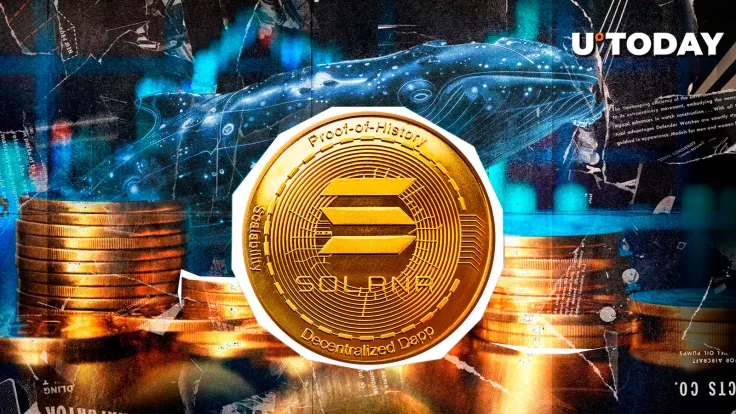What are the benefits of Unicorn Wealth’s new stock issuance mechanism launched by Virtuals?
Author: Anci, Biteye
It's been a week since the 1011 crash. Not only did it set a record for the largest margin call in history, at $20 billion, but this brutal plunge also prompted many KOLs to reflect on a painful fact of this bull market: the absence of faith among builders, the widespread use of scalping, and the increasing casino-like nature of the cryptocurrency market.
“The problem is that the overall crypto environment has undergone structural changes, and the cypherpunk spirit has been completely abandoned!”
—@tmel0211
"Why is it that every time a meme goes viral, the market crashes regardless of what happens next? Think about it. I hope everyone remembers this and can put it to good use in the future."
——@TingHu888
Against this backdrop, Virtuals, known for its strict ecosystem management, has introduced a new IPO rule, Unicorn. In addition to addressing issues like robot sniping and other fair launch issues, it focuses on attracting and supporting outstanding AI projects, leaving some hope and ground for builders to revive the "cyberpunk spirit."
What are the highlights of Unicorn’s new stock issuance rules?
The launch of Unicorn will completely end the previous Genesis IPO rules. There are the following changes compared to the two.
For investors:
1. The points system has been cancelled, and everyone can buy
2. For new stock prices, a dynamic price curve based on FDV is used
The lower the amount of funds raised by a project (i.e., the lower the current FDV), the lower the price of new shares. Conversely, when a project is popular and the FDV is high, the price will increase. This requires investors to thoroughly research the project and accumulate sufficient shares before the FDV rises too high.
The lower the amount of funds raised by a project (i.e., the lower the current FDV), the lower the price of new shares. Conversely, when a project is popular and the FDV is high, the price will increase. This requires investors to thoroughly research the project and accumulate sufficient shares before the FDV rises too high.
3. To address the issue of front-running, introduce a decaying tax mechanism
During the first 100 minutes of a project launch, a buyer's tax will be charged, with the rate decaying linearly from 99% to 1% (approximately 1% per minute). This means that if you jump in within the first minute of a project launch, $99 of every $100 you trade will be paid in tax. This makes it unprofitable for robots to jump in first.
However, point 3 combined with point 2 also creates a problem: if investors wait until after the tax rate decay period to buy, the FDV may have already risen to a very high level, and the price will also rise accordingly. This requires investors to find a suitable buying balance point.
4. Airdrop: Each project will be allocated 5% of the community airdrop
2% of this amount is allocated to $VIRTUAL stakers; 3% is allocated to active users in the ecosystem. Reference dimensions may include transaction volume, ACP participation, Butler interaction, etc.
5. Support 3x leverage for long/short trading
While providing investors with more trading tools, it also amplifies the rewards and penalties for Builder projects and Rug projects.
For the project parties:
1.50% of tokens are allocated to the founding team, but will be unlocked based on FDV
25% is locked for a long term (or unlocked when FDV reaches $160 million), and will be released linearly over 6 months after unlocking.
25% for linear fundraising: This portion of tokens will be gradually sold through on-chain limit orders as the project's FDV grows from $2 million to $160 million, providing the team with a continuous cash flow.
2. Allow founding teams to purchase tokens from the public IPO pool (45%), with no upper limit and fully public on-chain
These tokens follow a 1-month lock-up and 12-month linear release rule by default, which means that strong founding teams can publicly purchase their own tokens to demonstrate the official's long-term confidence to the community.
From Genesis to Unicorn, the Crypto World's Ambition
As mentioned earlier, Virtuals "strictly governs the ecosystem." This strictness was primarily reflected on the user side during the Genesis era: retail investors who wanted to make money on Virtuals had to pass various "loyalty tests": various holds and pledges, desperately accumulating points, and they couldn't sell them at will. Otherwise, they would be imprisoned, labeled as "jeet," and no longer eligible for various airdrops and points.
However, the drawbacks of the "rolling user" system soon became apparent, and the points system quickly turned into farming, which in turn brought about point inflation and user fatigue.
Therefore, we can clearly see that Virtuals is gradually adjusting its direction and turning its strict focus to the project side:
- Last month, Virtuals launched ALE (Agent Liquidity Engine) as a core indicator for measuring agent performance, focusing on whether the product solves real problems, whether it has sustainable revenue, and whether the team can continuously return revenue to the ecosystem.
- Official regulations stipulate that if an AI agent participating in ACP fails 10 times in a row, the system will automatically "downgrade" it to ensure that the ACP platform always maintains high standards of intelligent agent services.
The introduction of the Unicorn IPO mechanism further enhances the project's security, making it impossible for "rug" projects to hide and giving high-quality projects the opportunity to shine. All of this is designed to ensure that all projects that come to Virtuals have a long-term commitment and ultimately retain the highest-quality AI projects for the ecosystem.
You can no longer view Virtuals through the lens of Launchpad
A Launchpad is essentially a token issuance machine; a step further, it's a small Dex, whose revenue comes from activity and liquidity. Meme sentiment is often its foundation, but sentiment is inherently fleeting and elusive, so most Launchpads are destined to be short-lived.
At the beginning of its establishment, Virtuals cleverly limited the project scope to AI Agent, and vigorously incubated popular projects such as AIXBT, improving the tone and quality of AI Agent in the ecosystem, striving to get rid of the label of AI Meme and create a Builder ecological atmosphere.
After accumulating a certain amount of high-quality projects, Virtuals launched the ACP program, which conforms to the narrative of multi-AI agent communication and collaboration under the current MCP framework - this is also the main idea in the industry about how AI agents work and solve practical problems.
However, the highly anticipated launch of Axelrod, an AI hedge fund based on the ACP framework, failed to meet expectations, leading to Virtuals' ACP business failing to generate significant buzz. This shouldn't be a cause for dismay, however, as even traditional AI giants haven't yet fully mastered the multi-agent system. Consequently, Virtuals launched Butler on the user side, providing a more accessible platform for public education and communication about ACP, while continuing to explore the various AI agents within its ecosystem.
Currently, the multi-AI agent collaboration represented by ACP is a recognized future potential. A breakthrough could rival the ChatGPT moment. However, truly achieving this goal requires not only continued optimization of the network design itself, but also further improvements and breakthroughs in agent capabilities. Therefore, Virtuals aims to leverage Launchpad to attract outstanding AI agent projects to its network.
What are the wealth benefits for retail investors?
Even the grandest empires cannot be built without a strong mass base. For ordinary users, this Unicorn upgrade still has many benefits:
1. Under the stimulation of various official policies, the quality of projects on the platform will be improved to a certain extent.
2. The points system has finally been cancelled, so there is no need to roll anymore.
3. Provide leveraged long and short trading, with more tools to amplify profits and stop losses.
Of course, on the other hand, the dynamic price curve and tax rate mechanism based on FDV also increases the difficulty of entry timing.
Unfortunately, given the current volatile macro environment, the projects launched after Unicorn's launch haven't yet replicated the significant wealth creation effect seen during the Genesis era. However, as time passes, there's still significant potential for new IPOs on Unicorn once the market turns.
Most importantly, Virtuals' Unicorn upgrade has injected a rare dose of crypto-cyber faith into Builder during this relatively sluggish period, and has given us more expectations—looking forward to more AIXBT moments, and also looking forward to ACP ushering in ChatGPT moments.
You May Also Like

Best cryptocurrency to invest in for 6,000% ROI

8.18 Million Solana Committed on CME as SOL Options Prepare to Go Live
